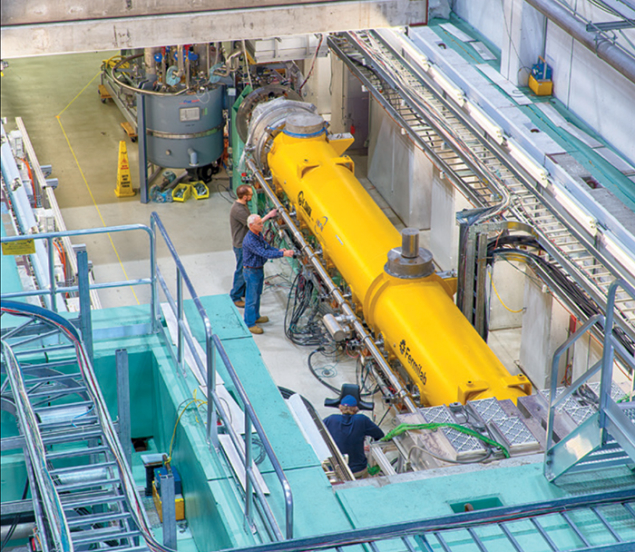
Image credit: Fermilab.
For the first time, the gradient specification of the International Linear Collider (ILC) design study of 31.5 MV/m has been achieved on average across an entire ILC-type cryomodule made of ILC-grade cavities. A team at Fermilab reached the milestone in early October. The cryomodule, called CM2, was developed to advance superconducting radio-frequency technology and infrastructure at laboratories in the Americas region, and was assembled and installed at Fermilab after initial vertical testing of the cavities at Jefferson Lab. The milestone – an achievement for scientists at Fermilab, Jefferson Lab, and their domestic and international partners in superconducting radio-frequency (SRF) technologies – has been nearly a decade in the making, from when US scientists started participating in ILC research and development in 2006.
Between 2008 and 2010, all of the eight cavities in CM2, after being electropolished, had been individually pushed to gradients above 35 MV/m at Jefferson Lab in vertical tests. They were subjected to additional horizontal tests at Fermilab. They were among 60 cavities being evaluated globally for the prospect of reaching the ILC gradient. This evaluation was known as the S0 Global Design Effort, and was a build-up to the S1-Global Experiment, which put to the test the possibility of reaching 31.5 MV/m across an entire cryomodule. The final assembly of the S1 cryomodule set-up took place at KEK in Japan between 2010 and 2011. In S1, seven nine-cell 1.3 GHz niobium cavities strung together inside a cryomodule achieved an average gradient of 26 MV/m. An ILC-type cryomodule consists of eight such cavities.
Over the years, teams in the Americas region have acquired significant expertise in SRF technology, including increasing cavity gradients. Cavities manufactured by companies in the US, for example, have improved in quality: three of the eight cavities that make up CM2 were fabricated locally.
The CM2 group at Fermilab will push the gradients higher to determine the limits of the technology and to continue to understand and advance it. They expect to send an actual electron beam through CM2 in 2015, to understand better how the beam and cryomodule respond together. The aim is to use CM2 in the Advanced Superconducting Test Accelerator currently being commissioned at Fermilab. The SRF technology developed for FLASH at DESY, the European XFEL and now CM2 also has applications for the proposed PIP-II at Fermilab and at light sources such as LCLS-II at SLAC.





